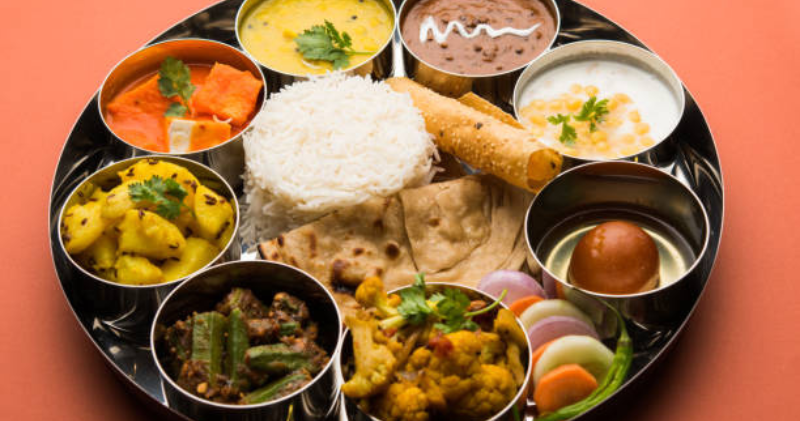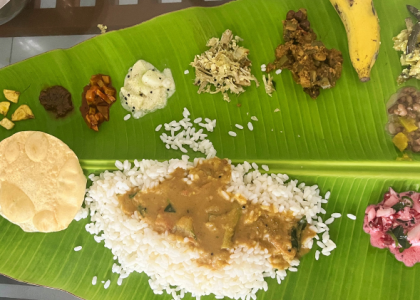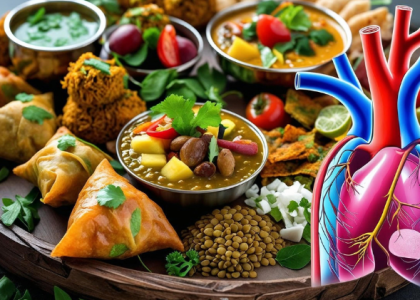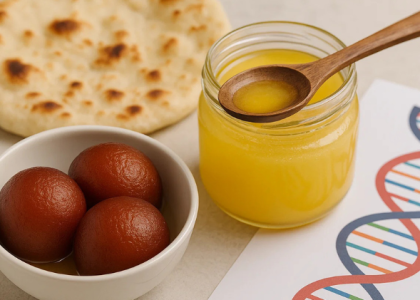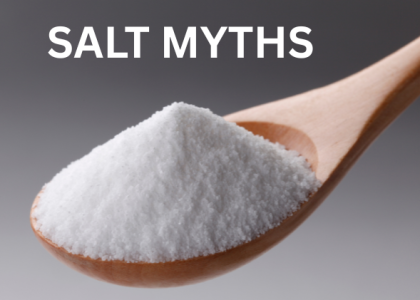Our traditional Indian meals bring us comfort, joy, and connection to our culture. From steaming rice and dal to crispy parathas and festive sweets, these foods are deeply tied to our identity and family memories.
But as heart disease becomes more common in our community, many of us wonder: Are our beloved traditional foods part of the problem or part of the solution?
The truth, as with most things in life, lies somewhere in the middle. Let’s explore this question together with care and respect for our culinary traditions.
Is Ghee Always Good for the Heart?
Ghee holds a special place in Indian cooking and Ayurvedic tradition. Many of us have grown up believing ghee is a “pure” fat and therefore healthy.
Traditional wisdom says ghee aids digestion and provides nourishment. Modern research shows that ghee does contain some beneficial compounds [1]. However, health organizations worldwide advise limiting ghee consumption because of its high saturated fat content, which may increase cardiovascular risk [2].
So what’s the balanced approach? Moderation is key. Health experts suggest limiting total cooking fat (including ghee and oils) to about 3 teaspoons per day [3]. You might use 1 teaspoon of ghee and 2 teaspoons of heart-healthy oils like mustard or olive oil daily.
The Daily Rice Question
For many South Asian families, a meal without rice feels incomplete. But does our rice-heavy diet contribute to heart concerns?
White rice is processed, with much of its fiber and nutrients removed. This can cause blood sugar spikes, especially in large portions, potentially contributing to diabetes and heart issues over time.
Small changes can make a big difference:
- Try mixing white rice with fiber-rich brown rice to start
- Serve smaller portions of rice, with more vegetables on the side
- Add fiber-rich foods like dal alongside your rice
- Consider alternatives like millets or quinoa for some meals
Parathas: Comfort Food Compromise
There’s nothing quite like a hot paratha with a dollop of butter or ghee. But traditional parathas can be high in refined flour and fat.
Heart-healthier options include:
- Making parathas with whole wheat flour instead of refined flour
- Using minimal oil for cooking (try an oil spray)
- Mixing in vegetables, methi (fenugreek), or other greens into the dough
- Enjoying them occasionally rather than daily
One plain paratha contains about 126 calories, with a significant portion coming from fat [4]. Being mindful of portion size and frequency can help balance enjoyment with health.
Sweets: The Heart of Celebration
Indian sweets are central to our celebrations and traditions. Dishes like gulab jamun, jalebi, and ladoos are delicious but typically high in sugar and fat.
Rather than giving up these treats entirely, consider:
- Saving sweets for special occasions
- Enjoying smaller portions
- Trying fruit-based desserts like fruit chaat with a touch of honey
- Experimenting with reduced-sugar versions of traditional sweets
- Making kheer with brown rice and less sugar
Our Spice Advantage
One area where traditional Indian cooking truly shines is our use of spices. Many common Indian spices have heart-protective properties:
- Turmeric contains curcumin, which may help reduce inflammation
- Garlic and ginger may help lower blood pressure
- Cinnamon can help regulate blood sugar
- Fenugreek seeds may help lower cholesterol
These powerful ingredients are gifts from our culinary heritage that benefit heart health [5].
Small Changes, Big Impact
The good news is that you don’t need to abandon your cultural foods to protect your heart. Small, sustainable changes can make a significant difference:
- Use more vegetables and legumes in traditional dishes
- Choose whole grains when possible
- Moderate the amount of cooking oil and ghee
- Embrace the power of our traditional spices
- Control portion sizes, especially for rice, breads, and sweets
Finding Balance
Our traditional foods connect us to our culture and bring joy to our tables. The goal isn’t to reject these beloved dishes but to adapt them thoughtfully for better health while preserving their essence.
The next time you cook dal, perhaps use a little less ghee. When making rice, try mixing in some brown rice. These small steps honor our culinary heritage while caring for our hearts.
After all, food is meant to nourish not just our bodies but also our spirits and connections to each other. By making mindful choices, we can enjoy the incredible flavors of Indian cuisine while supporting our heart health for many years to come.
References
- Singh, G. et al. (2024). “Health benefits of ghee: Review of Ayurveda and modern science perspectives.” PMC
- Wikipedia. (2025). “Ghee.” Link
- 1mg. (2020). “World Heart Day: Indian Diet Chart for Heart Patients.” Link
- Tarla Dalal. (n.d.). “Parathas, Plain Paratha, Basic Paratha Recipe.” Link
- Wellness Munch. (2021). “Best Indian diet guide for a heart patient.” Link
